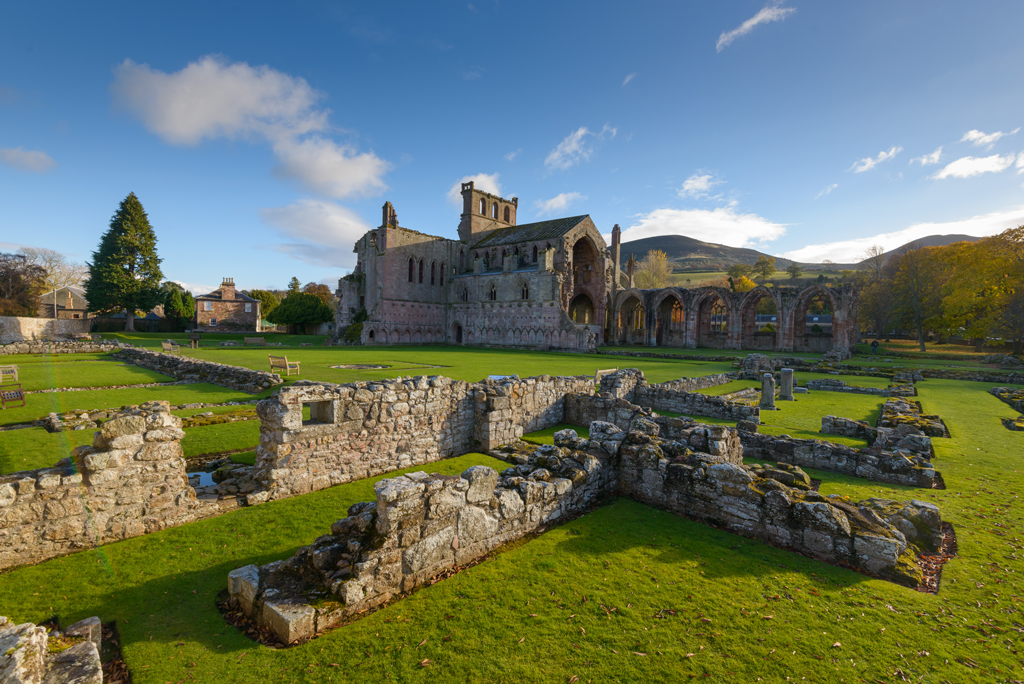Among the beautifully carved stones and mosaic floor tiles on display at Melrose Abbey are a collection of objects found during excavations in the early 20th century. Although small and in some cases only partially complete these objects hint at daily life at the Abbey both before and after the Reformation.

Multi-purpose medieval scissors
The handle and a blade from a pair of medieval scissors. Who did they belong to and what were they used for? Perhaps cutting the monks hair to give them their distinctive hairline?
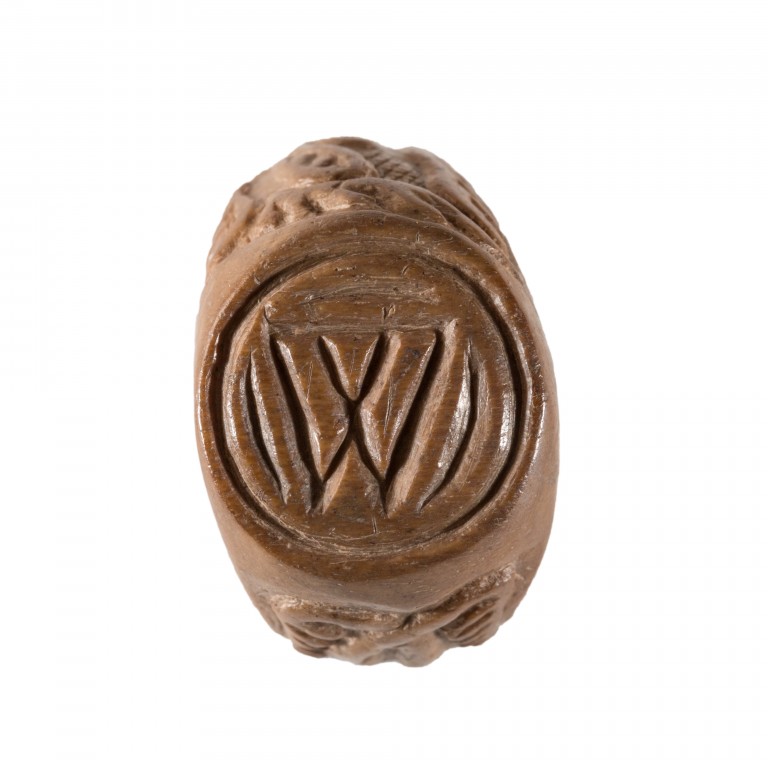
W for… Who?
An insignia ring embossed with the letter W, whose initial was this? Perhaps one of the many Williams who were Abbot at Melrose over the centuries?
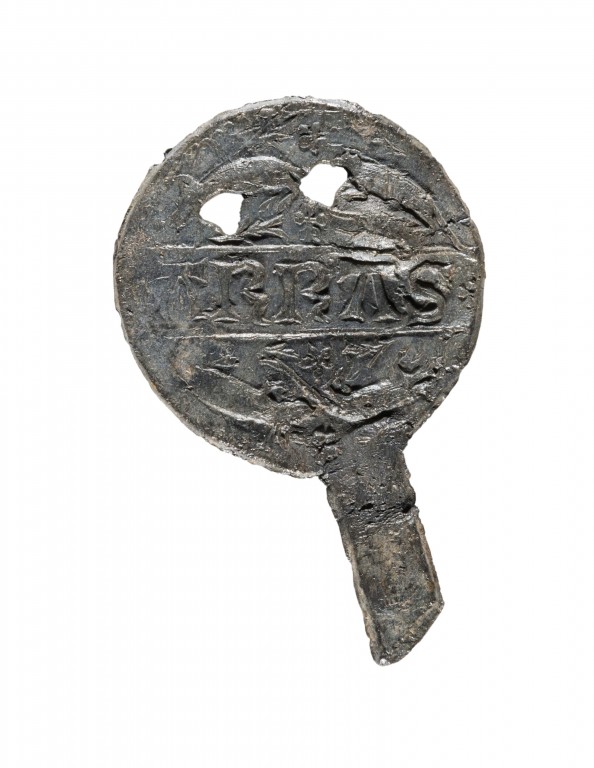
A sign of quality
Cloth seals, made of lead, which were widely used as a means of identification and quality control. The seals come from imported linen and provide evidence about the areas Melrose traded with including Arras in France.

Sensible specs
Part of a bone frame from a pair of 14th century spectacles, one of only 32 examples in the world. They were riveted together and clamped to the nose, conveniently leaving both hands free to turn the pages of a manuscript or perhaps write one.
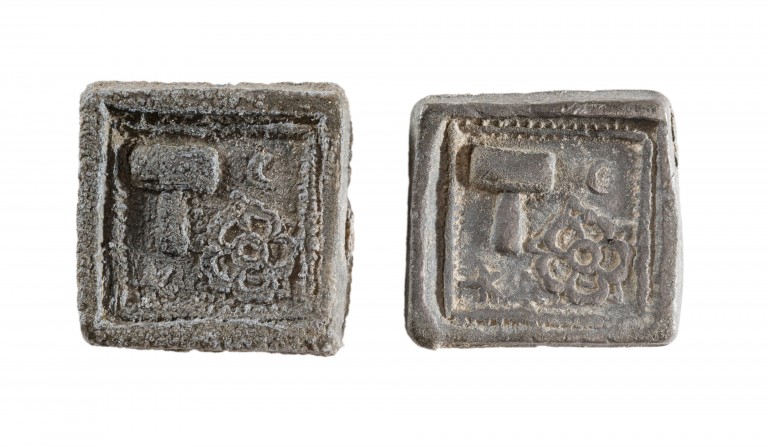
A mell and a rose
Post-Reformation communion tokens display a visual pun on the name of the Abbey – they are embossed with a Mason’s hammer (a mell) and a rose. These were used in the old parish church, set up when the monastic community left after the Reformation.

Behind the scenes
These objects are only a few of the 46 which have been off display for the last few months undergoing conservation work. Natalie Mitchell (above) and Cym Storey, conservators at AOC Archaeology, have been responsible for looking after the artefacts:
“Some of these objects needed only light cleaning, others needed treatments including removal and re-application of protective surface coatings and treatment of active corrosion. The group has now been conserved, and it is pleasing to see the objects in a stable condition and looking their best for re-display in the Abbey.”
These objects will be joined by four statues which were removed from the Abbey in the early 1980s. These statues represent the saints: Peter; Paul; Andrew and the Virgin Mary. The statues date to the early 15th century and the re-building of the Abbey after it destruction by the armies of Richard II of England.
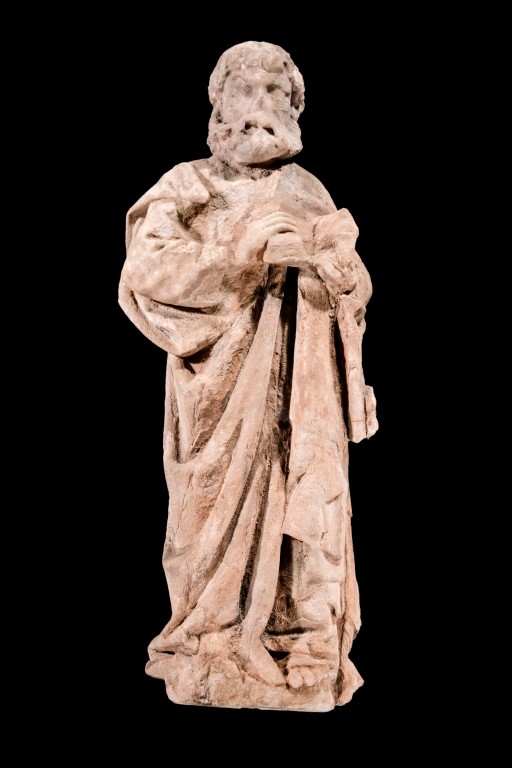
A statue of Saint Andrew.
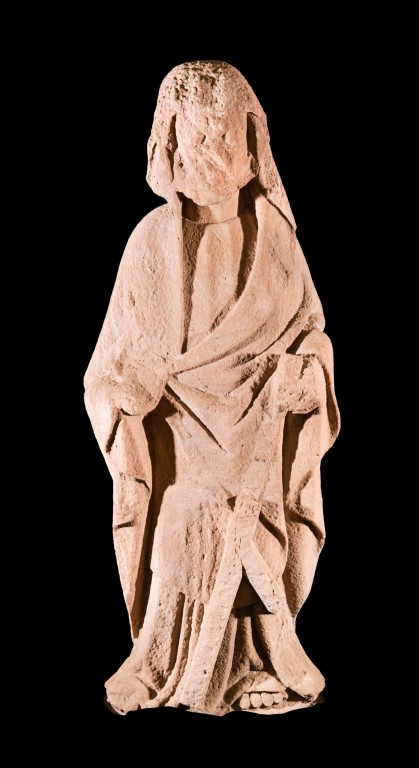
A statue of Saint Peter.
The statues were removed to prevent further weathering which was eroding the sandstone and blurring the beautiful details. However, the weather is not the only damage these statues have faced. During the Scottish Reformation in the mid-16th century, they were defaced by angry Protestant mobs who considered them ‘Popish’ idols which had no place in the Reformed Church.
After their removal the statues underwent cleaning and conservation work. Stephen Gordon, Head of Applied Conservation here at Historic Environment Scotland, worked on the statues in the 1980s:
“The conservation work consisted of removing old cement based repairs using small hand tools. We secured areas of instability using lime based repair mortars and colour matched acrylic resin to the stone to keep the restoration work as sympathetic to the original.”
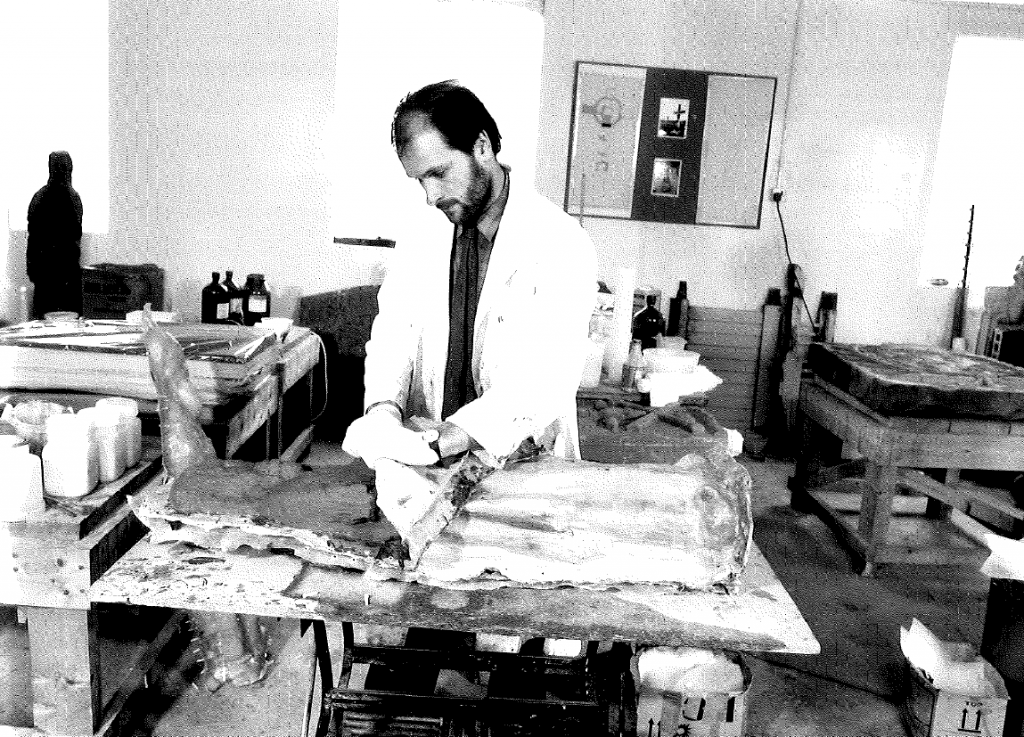
Stephen Gordon undertaking conservation work in the 1980s
After conservation moulds were taken of the statues in order to make resin replicas to fill the empty niches in the Abbey walls.
“On completion of the conservation repairs, we prepared the statues for moulding and casting using latex rubber and fibre glass. The polyester resin copies were formed from these moulds using pigments throughout the resin to replicate the colour of the originals.”
You will see these four replica statues in the niches on the Abbey today while the originals will be installed in the Commendator’s House Museum ready for re-opening on Saturday 20 May.
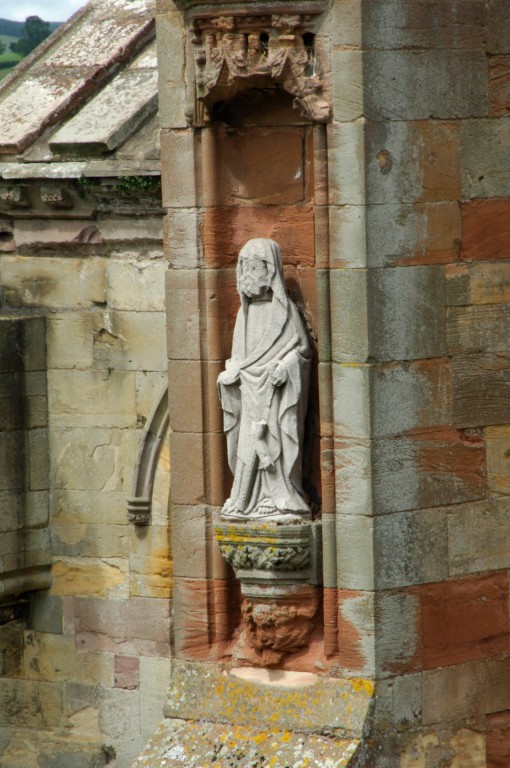
The Chronicle of Melrose
Come along to see the objects for yourself, talk to members of the Collections Unit and examine real objects from our artefact handling box at The Chronicle of Melrose on Saturday 20 May 2017, part of the Festival of Museums.

